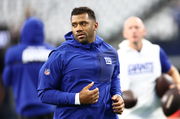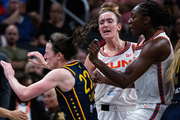
Imago
NFL, American Football Herren, USA Buffalo Bills at New England Patriots Jan 5, 2025 Foxborough, Massachusetts, USA Buffalo Bills quarterback Josh Allen 17 on the field after the game against the New England Patriots at Gillette Stadium. Foxborough Gillette Stadium Massachusetts USA, EDITORIAL USE ONLY PUBLICATIONxINxGERxSUIxAUTxONLY Copyright: xDavidxButlerxIIx 20250105_db2_sv3_042

Imago
NFL, American Football Herren, USA Buffalo Bills at New England Patriots Jan 5, 2025 Foxborough, Massachusetts, USA Buffalo Bills quarterback Josh Allen 17 on the field after the game against the New England Patriots at Gillette Stadium. Foxborough Gillette Stadium Massachusetts USA, EDITORIAL USE ONLY PUBLICATIONxINxGERxSUIxAUTxONLY Copyright: xDavidxButlerxIIx 20250105_db2_sv3_042
Country Roads, take me home, isn’t that what sums up the NFL QB Josh Allen’s love for his humble beginnings? Before Josh Allen became an NFL MVP and the face of Buffalo Bills, Josh Allen was just a raw, overlooked kid from Firebaugh, California, with zero Division I offers out of high school. It took a leap of faith from Wyoming, and a long-shot development arc to turn him into one of football’s most electrifying QBs. As Allen’s alma mater, University of Wyoming now faces financial pressure, it seems in an NIL-fueled college football landscape, that same journey of Allen might not even be possible.
Watch What’s Trending Now!
Why, you ask? Well, the House settlement gave a green signal to share revenue with student-athletes with $20.5 million cap. On one side, with big-budget programs flexing their financial muscle, ready to pour money into their rosters, the flip side of the coin sees a stark contrast. With smaller programs operating only a fraction of budget the talent pipeline is under threat. Initially, there had been discussions about whether smaller programs like University of Wyoming should opt in or opt out. Tom Burman, UW Athletics Director, believes that the ramifications of opting out are unpleasant. Wyoming athletics faces a looming challenge, which might deter athletes from landing at Laramie and possibly dim its hopes for future NFL success stories.
Out of the $20.5 million cap, the University of Wyoming has put aside a modest $2.8 million to pay its student-athletes. Out of the proposed budget, approx. 1.5 is in store for direct NIL agreements. Another million for Alston awards, and the rest, $300,000, for eight new women’s scholarships. Four out of eight scholarships are reserved for Volleyball, one for swimming and diving, another for women’s tennis, and the remaining for women’s soccer. But is it enough to attract and retain talent?
ADVERTISEMENT
Wyoming will use $2.8M of its rev share cap space this year.
$1.5M in NIL $ will go to athletes in 🏈, men’s/women’s 🏀, 🏐, and 🤼.
$1M will be paid to athletes via Alston payments.
And they’ll add 8 new scholarships total: 4 in 🏐, one in 🏊, one in W ⚽️, and one in W🎾. https://t.co/YiwaKkq3lF pic.twitter.com/yCxbNgzfww
— Mit Winter (@WinterSportsLaw) July 30, 2025
Wyoming has scooped out $2.8 million for its athletic program, which accounts for a mere 12% of the $20.5 million financial chunk the House Settlement proposed. A $17.7 million disparity! An imbalance of missing out on top talents. “They set a cap at $20.5 million, which, in my lifetime, we will never be able to reach, and nobody at our level will reach,” Burman said. “All of this is subject to change. It could change in six months, and it could change tomorrow.” But amid the internal chaos the sports verticals at Wyoming are going through, football will have the majority of the share, between 65-80% of the total revenue. And yes, if a student-athlete from one of UW’s non-revenue sports programs excels, the program looks forward to signing an NIL deal with them. But again, that’s not the whole picture.
$20.5 million is the proposed cap, but is there any limit to it? Aside from NIL agreements with the program, students can sign third-party deals from collectives as well. “Texas Tech has talked publicly about spending $30 million in NIL money, which doesn’t count toward their cap. Where do you draw the line?” UW’s senior associate athletics director for compliance, Peter Prigge, said. “Eventually, that will come into play.”
ADVERTISEMENT
Another factor that looms large is the agents. They scout out talent and put them on the radar of big programs. “Those agents don’t abide by any process. They don’t go through any certification in any way, shape, or form, because it’s all NIL-based.” The Power Four programs have vast recruiting departments, which employ scouts to keep an eye out for budding talent across the circuit. They watch games, review films, and attend practices, looking for players who might be dominating at the lower level but haven’t received the spotlight yet.
Look at QB Dariah Mensah, who played for Tulane. Out of high school, he just had two offers: Idaho State and Lindenwood University. Tulane gave him a chance, then Duke, with a $4 million deal on the table.“So, that creates problems, because an agent can call (Colorado State), Nevada, and San Diego State and say, ‘Hey, this dude in Wyoming right now, I know you’re going to play him (in the conference season), just check it out and let us know what you think.’ That makes it even harder,” added Prigge.
ADVERTISEMENT
So, does that mean that the not-so-financially robust programs will face a talent crunch?
Will the $20.5 million cap affect talent retention?
The answer to that is under the shades of grey. Since 2021, when the NIL landscape drastically changed for the first time, there have been allegations of “Pay-for-play.” Legendary coach Nick Saban has been vocal about it, and so is Deion Sanders.
ADVERTISEMENT
Programs like Wyoming might face uncertainty over attracting elite talent. So, is this a hurdle for not-so-financially-robust-programs only? Well, not really. I mean, look at Alabama. Greg Bryne, Bama’s Athletic director, candidly put forth Bama’s NIL woes in the wake of 25 players leaving the Crimson Tide, following Saban’s retirement. “Although we have been competitive from an NIL standpoint, our competition has us in their sights and is actively trying to surge ahead with NIL. You have heard examples of other teams using promises of million-dollar paydays to lure away our players or convince them not to come to Alabama.”
Or look at Tennessee Vols’ former star QB Nico Iamaleava. When Josh Heupel called his ask of $4 million deal a bluff, the QB transferred to the Bruins. And if the competition to land elite talent gets so brutal in the SEC, which is known as the most competitive conference, maybe the whole of the CFB circuit is struggling to retain elite talent, battling it out against each other. Well. The transfer portal has made it more than easy, hasn’t it? Or maybe not. Look at Illini’s Luke Altmyer, who ditched $2 million offer for Bret Bielema’s vision.
Top Stories
Cowboys Fire Defensive Coordinator Matt Eberflus: Contract, Salary, NFL Earnings & More

Russell Wilson Announces Retirement Stance as Giants QB Shares Hidden Injury News

Huge Fire Destroys Over 125-Year-Old Golf Club Designed by 5x Open Winner in London – Report

Marina Mabrey Is Raising Eyebrows Again With Fiery Unrivaled Confrontation

Dolphins Reportedly Indecisive About Mike McDaniel as GM Search Kicks Off

Joe Flacco Makes Retirement Decision Clear as Bengals QB’s Final Gesture for Ja’Marr Chase Draws Attention

But then again, to regulate the once described ‘wild west,’ the newly established College Sports Commission launched the ‘NIL G0’ portal. If a deal of more than $600 is on the table, it has got CSC’s eyes on it. Within a month of the settlement coming into effect, it has already earned the discontent of Division I programs over the definition of “valid business purpose.” What do you think? Is NIL crunching talent for small programs, or are the stakes the same for all?
ADVERTISEMENT
ADVERTISEMENT
ADVERTISEMENT
ADVERTISEMENT

